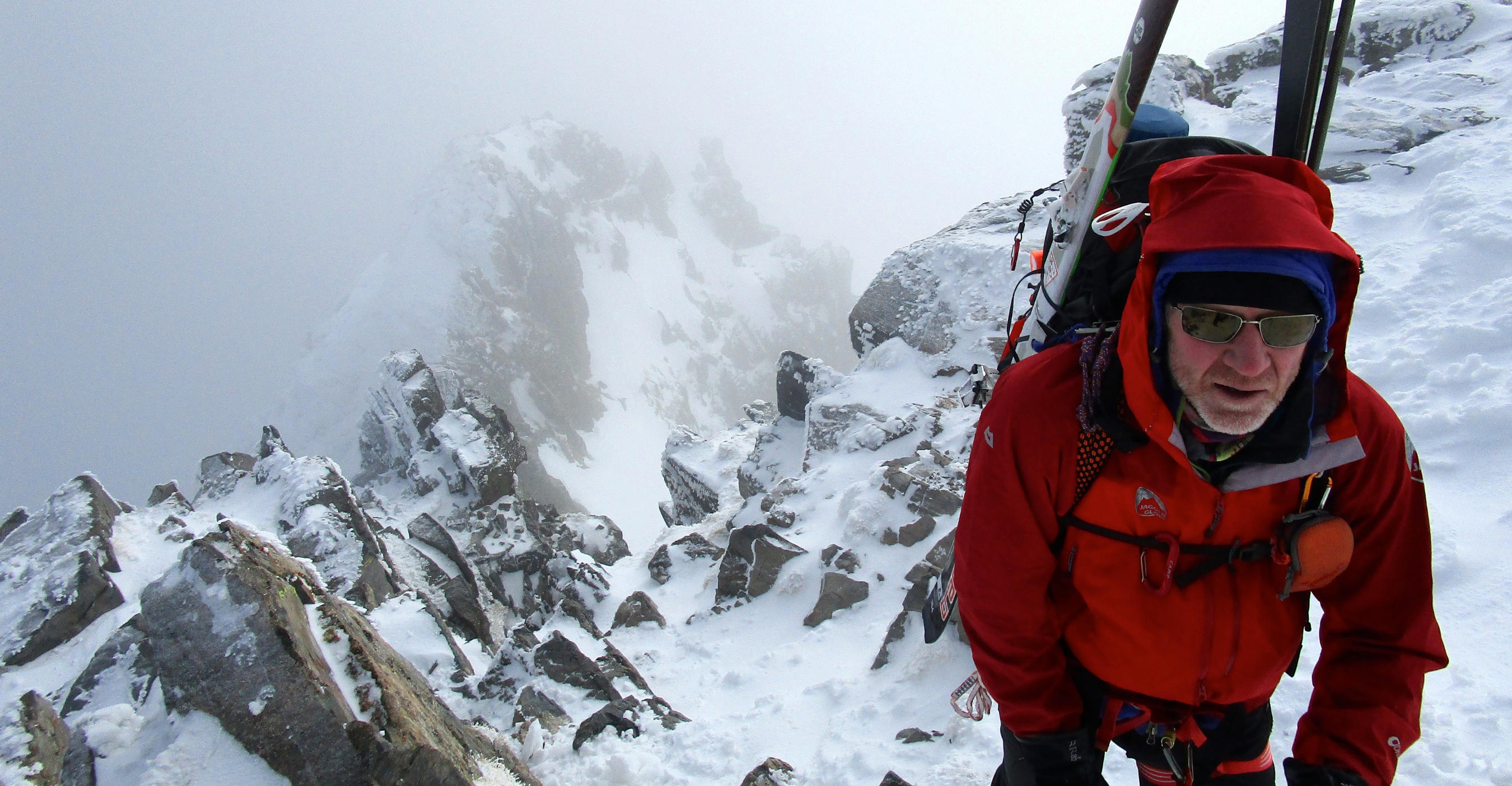Skidurchquerung Alpen, Pyrenäen & Norwegen | Packtipps
- Ski


David Hamilton gehört zu den erfahrensten britischen Höhenbergsteigern. In seinem Tourenbuch stehen aber nicht nur Höhen-Superlative, sondern auch beeindruckende Skidurchquerungen in Europa: In den Wintern 2015-2018 durchquerte er fast den gesamten Alpenbogen, vom Mittelmeer bis nach Osttirol. Nach einem Jahr Pause ging es 2020 mit Ski und Biwakausrüstung durch die Pyrenäen. Die aktuellen Reisebeschränkungen hat er für die Planung des letzten Teils seiner, wie er es nennt, „Großen Ski Trilogie Europa“ genutzt: 2.500 km durch Norwegen – natürlich auf Ski! Ein Erfolgsgeheimnis von Davids Skidurchquerungen ist eine durchdachte, auf das Wesentliche reduzierte Packliste. In unserem Blog verrät er, wie du auf einer Skidurchquerung mit wenig Gepäck und (trotzdem) ohne Frieren unterwegs sein kannst (englischer Originaltext):
---
In recent winters David Hamilton has led complete ski crossings of the Alps (Menton to Vienna in 129 days), and the Pyrenees (Mediterranean to the Atlantic in 63 days). He spent the long months of lockdown planning the final part of his ‘Great European Ski Trilogy’, the 2,500km winter traverse of Norway. Here are his thoughts on travelling light and staying warm.
Exploring new climbs and treks in the Karakoram as a young climber I thought nothing of carrying a pack weighing 25kg or more. Several decades of guiding in the Himalayas have made me soft, and I have become accustomed to hiring local staff in India, Nepal and Pakistan to do most of the heavy carrying. I have also come to realise that I really do not like carrying big loads, and as I approach my seventh decade my back does not like it either.
However it is not sensible to travel in Europe’s highest or most remote mountains in winter without sufficient kit to be safe, warm and comfortable. So the challenge is to find the lightest and most efficient clothing and equipment to cope with mid winter conditions from the 4000m peaks of the Alps to the high Arctic of Norway.
Each of the three ski projects has a roughly 50/50 split of nights spent in catered accommodation (hotels, hostels, B&B etc) and nights spent in remote mountain huts and cabins. Food and fuel for the self catering sections weighs about 1000g per day. I normally carry supplies for 3-4 days, but sometimes up to 6 days.
By keeping equipment and spare clothing as light as possible I am able to achieve a basic pack weight of 12-13kg. Adding several days food, plus water gives a fully loaded pack weight of 16-20kg. On cold weather days the pack is lighter as more clothes are being worn and fewer carried. On trips lasting for weeks or months it is not a good idea to cut back on food, so any weight savings have to be made in the clothes and kit carried.

I travelled the length of the alpine chain over 4 winters: Mediterranean to Chamonix 2015, Switzerland 2016, Western and Central Austria 2017, Eastern Austria 2018. This is a journey of 2,113km with 115,058m ascent divided into 102 stages and completed in 129 days.
I planned the route maximising use of the extensive Alpine hut network. In the early winter months and often away from the popular ski areas most huts were closed and only the winter rooms were open. The facilities in French and Italian huts were very variable, Swiss huts were uniformly excellent (but expensive). The locked Austrian huts looked great from the outside but the winter rooms were often basic. However all Alpine huts had adequate beds and blankets.
We only endured two cold unplanned bivouacs in 129 days of travel: at the Kaunertal ski area in Western Austria and outside the locked Sonnschienhütte in Eastern Austria. The decision to save weight by not carrying sleeping bags was probably correct. I refined the selection of items carried on the later parts of the project to minimise weight but the need to carry adequate climbing kit for the technical sections made it hard to get the pack weight (without food) less than 12-13kg.
The 2020 crossing of the Pyrenees would be similar to the Alpine trip but with one important difference: a lack of well-equipped huts. It is possible to avoid carrying a tent by using a network of basic huts and cabins, mostly without beds or blankets. I needed a sleeping system that was warm and comfortable but weighed as little as possible. After much thought I settled on: sleeping bag, bivy bag, short inflatable mat, light closed cell mat. Total weight: 1,685g. The Mountain Equipment Firelite sleeping bag weighing 770g was an ideal compromise between low weight and adequate warmth. The bivy bag would add a little extra protection in draughty huts and could be a lifesaver if we were benighted in the open. The closed cell mat would still work if the inflatable mat was damaged.
I used this kit for 24 of the 44 stages on the Pyrenees crossing. Good planning and good fortune meant that we never had to test the bivouac option. Opting for ultralight technical kit (ice axe, crampons, harness, probe, rope, etc) enabled me to shave 1500g from my Alpine load. Thus keeping overall pack weight again to 12-13kg despite the inclusion of the sleeping kit. The worst bits of the journey were the multiple sections below the snowline when carrying skis and boots added 7kg to the loads. In a year of fairly poor snow conditions we made the first British winter crossing of the Pyrenees covering 724 km with 54,000 meters of ascent in 63 days.

The ski traverse of Norway from the southernmost point to North Cape presents a new set of challenges. I aim to start on 1st January 2022. I have divided the 2,500km route into 90 stages and allowing for bad weather delays expect to take about 110 days. This journey is best done with Nordic ski equipment rather than Alpine, and I am the first to admit that I am not a skilled or efficient Nordic skier. I am hoping that my knowledge of mountain travel from previous Alpine ski trips together with experience from 15 seasons work in Antarctica will see me through. I have talked to several people who have made this journey in recent years including Nania Noakes (2018) and Ben Bardsley (2019). Their input and help has been invaluable.
Temperatures in Norway will be colder than the Alps or Pyrenees. This requires warmer clothes and a warmer sleeping system. Upgrading from the 410g Frostline jacket to the 620g Vega will add 210g, and switching from The 770g Firelight sleeping bag to the 1080g Xeros will add 310g. Taking a 1 Liter thermos adds another 370g. For the first time on a long ski trip I will be carrying a lightweight single skin tent. There are only a few obligatory camping nights, but this will a useful safety option if benighted between huts. The 1700g tent weight split between 2 people gives 850g each. Without allowing for warmer gloves etc this all adds up to an extra 1740g.
Removing the need to carry ice axe, crampons, probe, transceiver, harness, rope, carabiners, ice screw, snow stake, etc saves 1600g. Leaving out the bivy bag saves an extra 230g, making a total reduction of 1830g. After a complete rethink of the equipment and clothing for a different environment I find myself back at the same figure: a 12-13kg pack, excluding food and fuel. There is an extra bit of good news. If I do need to carry the skis on my pack at any point the Nordic skis are a lot lighter than the Alpine skis.
There is a saying in the military that ‘no plan survives first contact with the enemy’. The mountaineering equivalent is probably ‘even when you think you have selected the ideal clothing and kit for your project, once in the field it will become apparent that there are better choices and decisions that could have been made’. It is best not to be overly stressed by this. The main thing about any climb, expedition or journey is to enjoy the experience and learn from it. Refining and changing clothing and equipment choices can be left for the next project.
About David
Auf Davids Packliste:
Firelite (770g)
Der Firelite ist zuverlässig warm und überzeugt mit minimalem Gewicht.
>> Zum Produkt
Frostline Jacket (410g)
Ultraleichte Daunenjacke mit stark wasserabweisendem Außenmaterial für Alpinisten und Bergsteiger. Warm und klein packbar.
>> Für Herren
>> Für Damen
Vega Jacket (620g)
Unser bewährtes Vorzeigemodell: Leichte und wasserabweisende Daunenjacke für alle alpinen Wintertouren.
>> Für Herren
>> Für Damen





